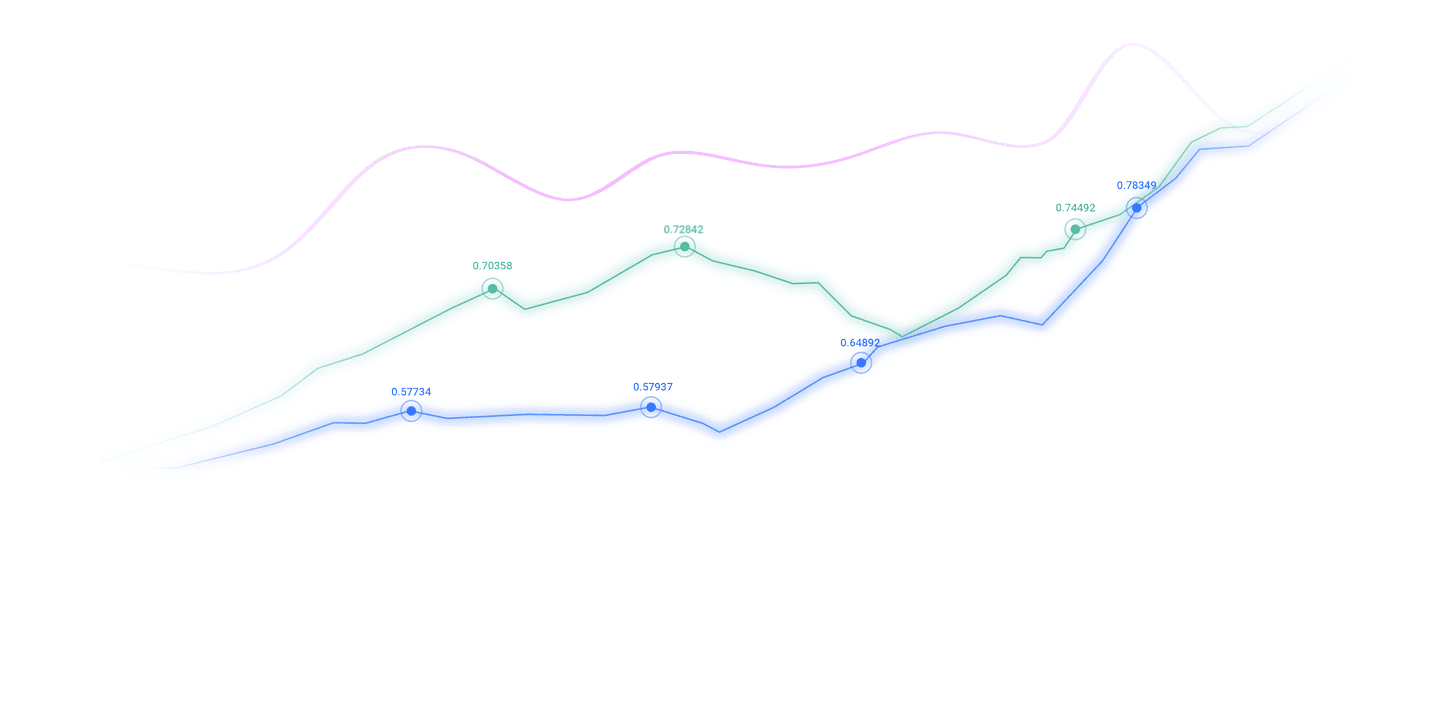Trusted by over 15 Million Traders
The Most Awarded Broker
for a Reason
CATEGORIES
News
- Powell's speech becomes key, the direction of the dollar is about to be revealed
- Alibaba's strong outbreak has led to a good start in September
- A collection of positive and negative news that affects the foreign exchange mar
- The probability of Fed rate cuts rises in September, and the Australian dollar r
- Practical foreign exchange strategy on August 13
market news
A collection of good and bad news affecting the foreign exchange market
Wonderful introduction:
Out of the thorns, in front of you is a broad road covered with flowers; when you climb to the top of the mountain, you will see the green mountains at your feet. In this world, if one star falls, it cannot dim the starry sky; if one flower withers, it cannot make the entire spring barren.
Hello everyone, today XM Forex will bring you "[XM Foreign Exchange Decision Analysis]: A collection of good and bad news that affects the foreign exchange market." Hope this helps you! The original content is as follows:
1. Core policy aspect: The Fed’s interest rate cut is implemented, and global central banks are divided into key variables
1. The Fed’s interest rate cut: short-term negative for the US dollar, hawkish guidance limits the decline (long and short trading) (Organization)
Details of policy implementation: In the early morning of October 30, Beijing time, the Federal Reserve lowered the benchmark interest rate by 25 basis points to 4.50%-4.75% as scheduled. At the same time, it released a signal to "end the balance sheet shrinkage" and is expected to stop quantitative tightening before the end of the year. However, the dot plot shows that the number of interest rate cuts in 2026 has been reduced from three to two. Powell emphasized in the press conference that "the foundation for the fall in inflation is not yet solid," releasing a hawkish easing signal.
Impact on the foreign exchange market: The U.S. dollar index fell 0.2% to 98.52 in the short term after the resolution was announced, and then quickly rebounded to 98.70, reflecting the market's pricing of "an interest rate cut but subsequent easing will be limited." This news formed a "short-term positive and long-term constraint" for non-US currencies - the euro/dollar briefly touched 1.1680 and then fell back to 1.1650, while the pound/dollar maintained a narrow range of 1.3340-1.3360.
2. The Bank of Canada cuts interest rates: the Canadian dollar is under pressure and falling (clearly negative)
Policy action: On October 29, the Bank of Canada announced an interest rate cut of 25 basis points to 2.25%, the third interest rate cut since 2024, in response to economic weakness under the threat of U.S. tariffs. The central bank's statement pointed out that "falling exports and weak corporate investment have dragged down economic growth," suggesting that easing may continue in the future.
Market reaction: USD/CAD jumped 0.35% to 1.3780 after the resolution was announced, hitting a two-week high. This news is directly negative for the Canadian dollar and strengthens the consolidation of www.xmhouses.commodity currencies.In a weak trend, AUD/USD simultaneously tested the 0.6540 support level.
3. European and Japanese central banks stand still: non-US currencies are supported by policy differences (relatively good)
European Central Bank’s position: The market generally expects that the European Central Bank will maintain the deposit interest rate at 2% on October 30. President Lagarde previously stated that “the current monetary policy matches economic conditions,” implying that the interest rate cut cycle has www.xmhouses.come to an end. The policy gap between the euro and the U.S. dollar narrowed from 1.75 percentage points to 1.5 percentage points, but it still provided relative support for the euro. EUR/USD closed at 1.1655 on October 29, a slight increase of 0.04% from the previous day.
BoJ constraints: Japan's new Prime Minister Takaichi Sanae's easing tendency limits the pace of the central bank's interest rate hikes. The market expects the next interest rate hike to be postponed to at least early 2026. USD/JPY maintained a range of 152.20-152.50 under the support of policy differentiation, and the geo-risk premium faded further suppressing the safe-haven demand for the yen.
2. Economic and data aspects: The US is weak and Europe is stable, and the RMB is supported by policies
1. Weak US economic data: the US dollar continues to be a long-term negative (potentially negative)
Inflation and employment signals: the United States In September, CPI increased by 3% year-on-year, and core CPI increased by 3% year-on-year, both lower than market expectations, providing basis for the Federal Reserve to cut interest rates; "small non-agricultural" ADP data showed that the private sector lost 32,000 jobs in September, the largest decline since March 2023. Although short-term hawkish guidance supports the dollar, weak fundamentals still pose long-term pressure.
Crude oil drags down related data: WTI crude oil fell nearly 2% to $60.15 on October 29, hitting a new low in June. This may lead to a further contraction in investment in the U.S. energy industry, and subsequent non-farm employment data may be dragged down, indirectly affecting the trend of the U.S. dollar.
2. Opening up of China’s foreign exchange policy: the RMB is endogenously supported (clearly positive)
Police benefits released: Zhu Hexin, director of the State Administration of Foreign Exchange, announced on October 28 the introduction of 9 new opening measures, including expanding the scope of cross-border trade pilots, optimizing the settlement of new trade formats, and relaxing the management of agency advances for trade in services. Data shows that in the first three quarters of 2025, my country's foreign-related receipts and expenditures reached US$11.6 trillion, a record high for the same period in history, providing fundamental support for the RMB exchange rate.
The exchange rate performance confirms: On October 29, the onshore RMB exchange rate against the US dollar closed at 7.0989, a slight decrease of 0.0014% from the previous day. The fluctuation range was less than 10 basis points, which was significantly narrower than other emerging market currencies. The central parity rate was reported at 7.0856, rising for three consecutive days, indicating that the policymakers have a clear intention to stabilize the exchange rate.
3. Market and Funding: Poor policies for speculative fund allocation, rising volatility
1. Changes in position structure: Long non-US currencies increased slightly (neutral to long)
Euro positions: As of October 28, the net long position in the euro increased by US$230 million to US$1.86 billion, reflecting the market's support for EuropeRecognition of the central bank's stabilization policy; short positions in the U.S. dollar index increased by US$180 million. Despite the short-term rebound, speculative funds still tend to plan for a long-term decline.
Japanese yen short positions expanded: USD/JPY non-commercial net long positions increased by 4,500 lots to 32,000 lots, a three-month high, and Japanese yen bearish sentiment increased amid expectations of policy differentiation.
2. The transmission effect of the crude oil plunge: www.xmhouses.commodity currencies are under pressure (linked negative)
Price linkage logic: Brent crude oil fell 1.86% to US$64.40 on October 29, and OPEC+ plans to increase production by another 137,000 barrels per day in December, exacerbating concerns about oversupply. As the currencies of crude oil exporters, the Canadian dollar and the Norwegian krone weakened simultaneously, and USD/NOK rose 0.28% to 10.82, further strengthening the weak pattern of www.xmhouses.commodity currencies.
4. Risk Warning
The resolutions of the European Central Bank and the Bank of Japan on October 30 will further amplify the effect of policy differentiation. If the European Central Bank releases a hawkish signal, the euro may exceed 1.1700; if the Bank of Japan unexpectedly mentions an interest rate hike timetable, USD/JPY may drop to 151.50. It is recommended that traders control their positions to less than 30% and wait for the policy dust to settle before laying out the trend market.
The above content is all about "[XM Foreign Exchange Decision Analysis]: Collection of good and bad news affecting the foreign exchange market". It is carefully www.xmhouses.compiled and edited by the editor of XM Foreign Exchange. I hope it will be helpful to your trading! Thanks for the support!
Every successful person has a beginning. Only by having the courage to start can you find the way to success. Read the next article now!
Disclaimers: XM Group only provides execution services and access permissions for online trading platforms, and allows individuals to view and/or use the website or the content provided on the website, but has no intention of making any changes or extensions, nor will it change or extend its services and access permissions. All access and usage permissions will be subject to the following terms and conditions: (i) Terms and conditions; (ii) Risk warning; And (iii) a complete disclaimer. Please note that all information provided on the website is for general informational purposes only. In addition, the content of all XM online trading platforms does not constitute, and cannot be used for any unauthorized financial market trading invitations and/or invitations. Financial market transactions pose significant risks to your investment capital.
All materials published on online trading platforms are only intended for educational/informational purposes and do not include or should be considered for financial, investment tax, or trading related consulting and advice, or transaction price records, or any financial product or non invitation related trading offers or invitations.
All content provided by XM and third-party suppliers on this website, including opinions, news, research, analysis, prices, other information, and third-party website links, remains unchanged and is provided as general market commentary rather than investment advice. All materials published on online trading platforms are only for educational/informational purposes and do not include or should be considered as applicable to financial, investment tax, or trading related advice and recommendations, or transaction price records, or any financial product or non invitation related financial offers or invitations. Please ensure that you have read and fully understood the information on XM's non independent investment research tips and risk warnings. For more details, please click here


































































































